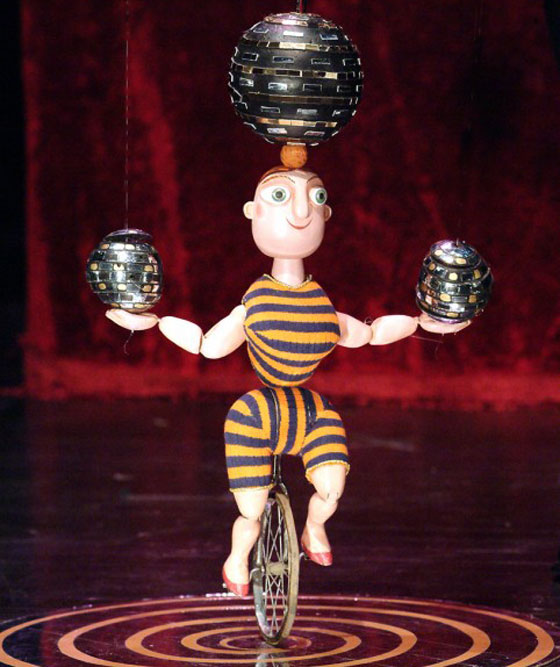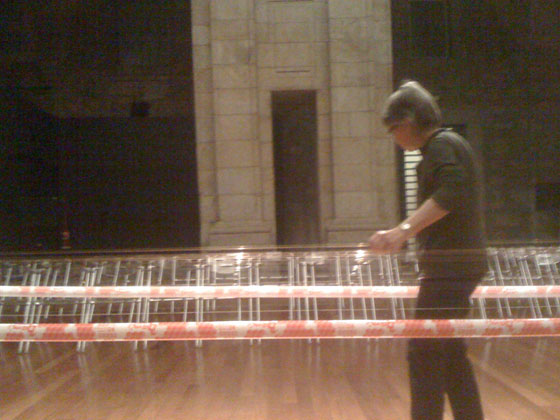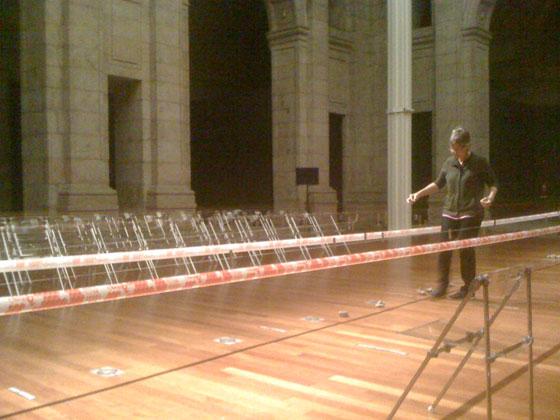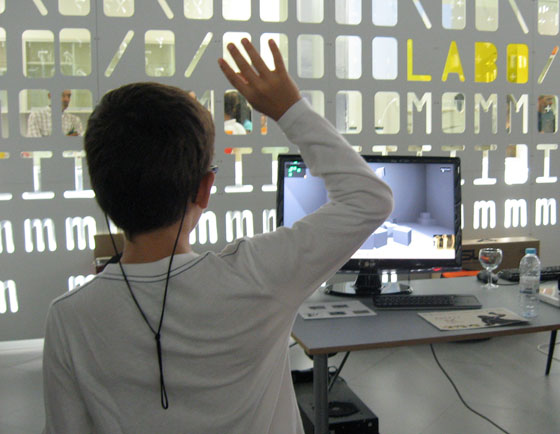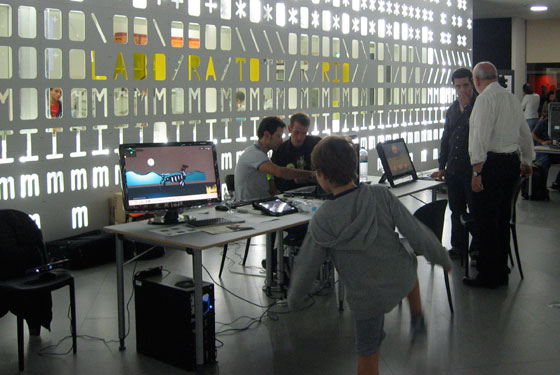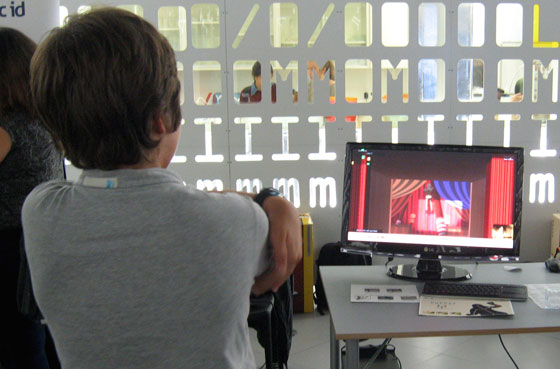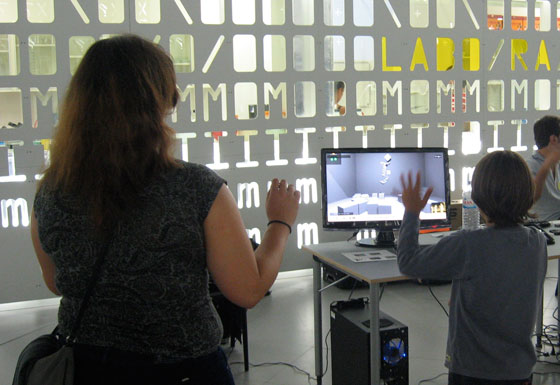Results from the explorative work made at “Espaço do Tempo” in Montemor-o-Novo in December 2013.
The manipulation of sound and visual elements using the body as interface like a marionette controller.
We explore the potential of the body motion in three main areas:
– Body expression to model sound and visual
– Body motion to trigger sounds
– Body position in space to model and trigger sounds
We define a sensitive space where the performer could move and interact with the audio-visual elements.
As we can verify in the video the way the performer interacts is somehow resembled to the way a puppeteer manipulates marionettes.
As future work we will explore deeply the perceptive motion of sound and visual. Creating a relation between diegetic and non-diegetic sounds and similar approach to the performance animation.
Video performance by: Amândio Anastácio
Multimedia: Grifu
Dec.2013


